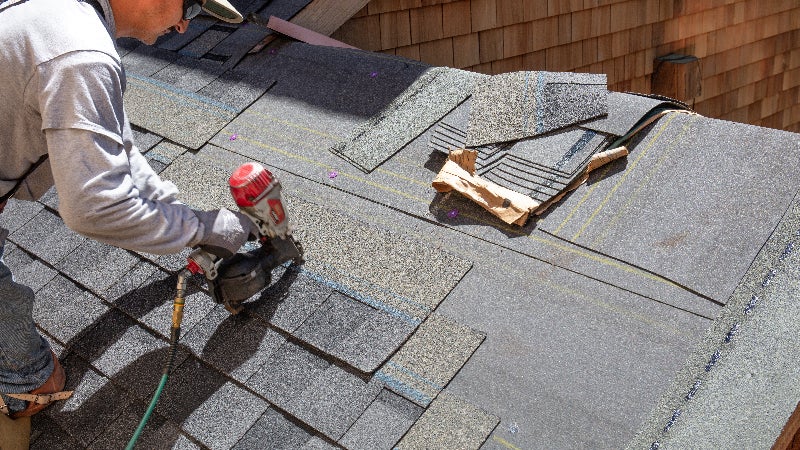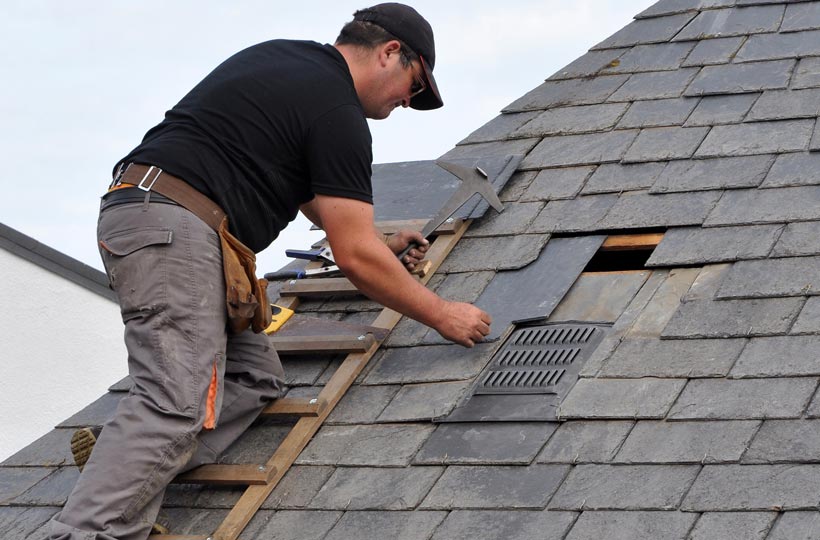Roof Covering: A Comprehensive Guide to Roofing Essentials
Roof is a necessary element of any kind of structure, giving security against the elements and guaranteeing the structural stability of a residential property. In "Roofing: A Comprehensive Overview to Roof Covering Fundamentals," we dive into the basic expertise needed to understand and perform effective roof covering tasks. Furthermore, we discover the detailed process involved in roofing, providing beneficial understandings right into appropriate installment strategies.
Various Sorts Of Roofing System Products
When it concerns roofing, there are various kinds of materials readily available for various applications and environments. Choosing the right roof product is vital, as it not just affects the aesthetics of a structure yet additionally plays a critical duty in protecting it from external components. One of the most preferred roof materials is asphalt roof shingles. These shingles are affordable, very easy to set up, and be available in a wide variety of designs and shades. They are appropriate for most environments and offer exceptional resilience and weather resistance. Another preferred alternative is steel roof covering, which provides outstanding longevity and toughness. Metal roofs are resistant to fire, pests, and rot, making them an ideal option for locations with severe weather. Floor tile roofing is one more alternative that is recognized for its durability and visual charm. Ceramic tiles are offered in various products such as clay, slate, and concrete, and can stand up to severe climates. Ultimately, there are also choices like timber trembles and artificial products like rubber and plastic. Each roofing material has its very own advantages and negative aspects, so it is necessary to think about factors such as maintenance, price, and durability requirements prior to choosing.

Benefits of Each Roofing Material
Each roof product offers unique advantages that make it ideal for different applications and environments. Understanding these advantages can assist contractors and homeowners make informed choices when choosing the best roof material for a specific job.
Asphalt shingles, for example, are one of the most popular roof materials due to their price, sturdiness, and convenience of installment. Metal roof coverings, on the other hand, are known for their durability and energy efficiency.
For those seeking a more eco friendly option, there are roof products like clay tiles and slate. Slate roofing systems are not just aesthetically pleasing but likewise very sturdy, with a lifespan of up to 100 years.
When it pertains to level roof coverings, EPDM (ethylene propylene diene terpolymer) rubber is a popular choice because of its versatility, very easy setup, and resistance to UV rays and weathering. It is additionally cost-efficient and calls for marginal upkeep.
Crucial Devices for Roof Covering Projects
Roof covering jobs require an array of crucial tools to guarantee reliable and effective setup or fixing. One of the most vital tools is a roofing nail weapon, which enables for quick and safe and secure accessory of tiles or other roof covering materials.
One more necessary tool is a roofing blade, which is used for reducing roof shingles and various other materials to the preferred shapes and size. A roofing blade should have a sharp, sturdy blade that can quickly cut with numerous roofing products. Furthermore, a roofing shovel or tear-off device is needed for getting rid of broken or old roof products. This tool has a flat, large blade that can successfully pry off tiles, nails, and other debris from the roof.

Steps Associated With the Roof Refine
To start the roof covering process, it is vital to initial analyze the condition of the existing roof and determine if any type of repair services or substitutes are essential. This step is vital as it sets the foundation for the remainder of the roof covering project. A complete inspection needs to be carried out to recognize any indications of damages, such as missing out on or damaged shingles, leaks, or sagging areas. It click over here now is likewise vital to check for any architectural problems that may influence the overall integrity of the roofing.
When the evaluation is total, the next step is to prepare the roofing system for the installation or repair. This involves removing any existing roof covering products, such as old roof site web shingles or ceramic tiles, and removing the area of debris. It is essential to ensure that the roof is tidy and cost-free from any obstructions prior to waging the next actions.
After preparing the roof covering, the following step is to install or fix the roof materials. This involves setting the proper underlayment, such as roof felt, and afterwards using the selected roofing product, such as tiles or tiles, according to the supplier's directions. It is essential to follow the proper setup techniques to make certain a long lasting and watertight roof.
Ultimately, the last step in the roof covering process is to perform a final evaluation to guarantee that the roof covering has actually been properly installed or repaired. This includes checking for any kind of damaged or loosened materials, as well as making certain that all blinking and seals are protected. High Point roofing. It is vital to address any type of issues promptly to prevent further damage or leakages
Tips for Keeping and Repairing Your Roofing
When preserving and fixing your roofing, it is critical to regularly inspect for any signs of damages or wear. Begin by examining your roof for any kind of absent or loose shingles, as these can leave your roof vulnerable to leaks and water damage.
Furthermore, check your roof covering for any type of indicators of leaks or water discolorations on the ceiling or wall surfaces inside your home. These can be signs of a roofing leak and ought to be addressed promptly to prevent further damages. Pay close interest to areas around chimneys, vents, and skylights, as these prevail locations for leakages to occur.
Regularly cleansing your roofing system is another essential facet of maintenance. Remove any kind of debris, such as branches or leaves, as they can trap dampness and result in roof degeneration. Additionally, maintain rain gutters and downspouts clear to make sure proper water drain and avoid water from merging on your roofing system.
In regards to repair services, it is essential to resolve any concerns quickly to stay clear of additional damages. Small fixings, such as replacing missing out on shingles or sealing small leaks, can commonly be done by property owners. For extra substantial repairs or if you are uncertain of the degree of the damages, it is advised to consult with an expert roof covering specialist.
Conclusion

In "Roof covering: A Comprehensive Overview to Roof Covering Basics," we delve into the essential understanding required to comprehend and implement effective roof covering tasks. One of the most important tools is a roofing nail gun, which allows for protected and quick accessory of roof shingles or other roofing materials. A roofing knife should have a sharp, durable blade that can easily slice through numerous roof covering products. In addition, a roof shovel or tear-off device is needed for eliminating old or damaged roofing products.After preparing the roofing, the next step is to install or fix the roof materials.